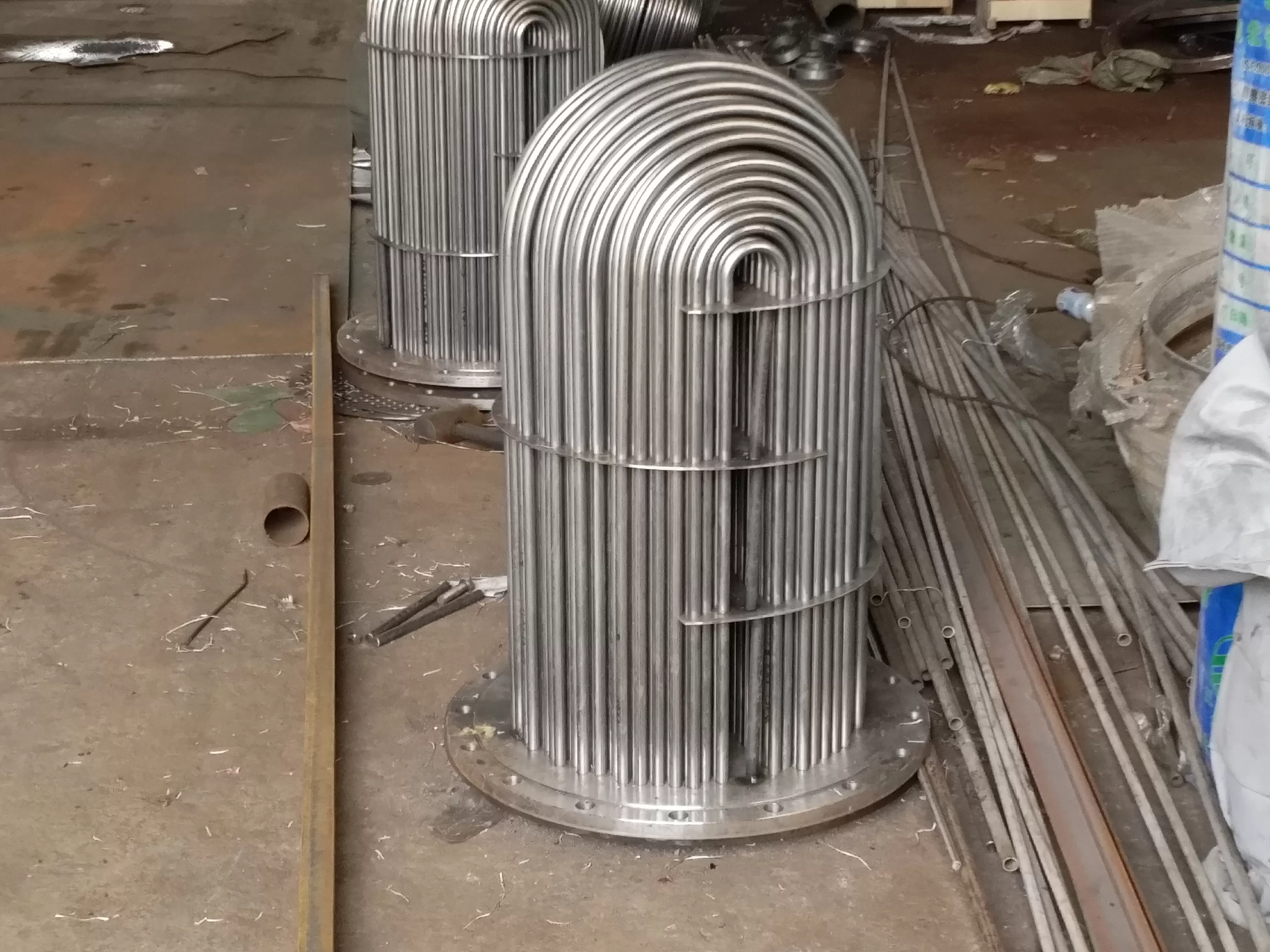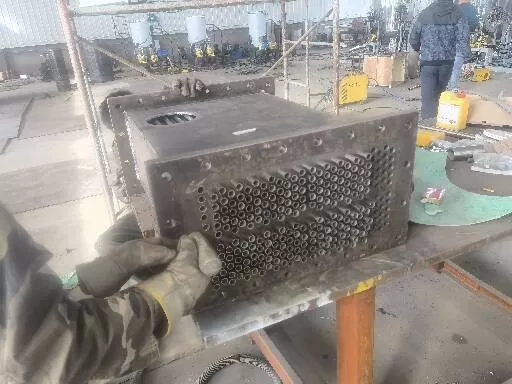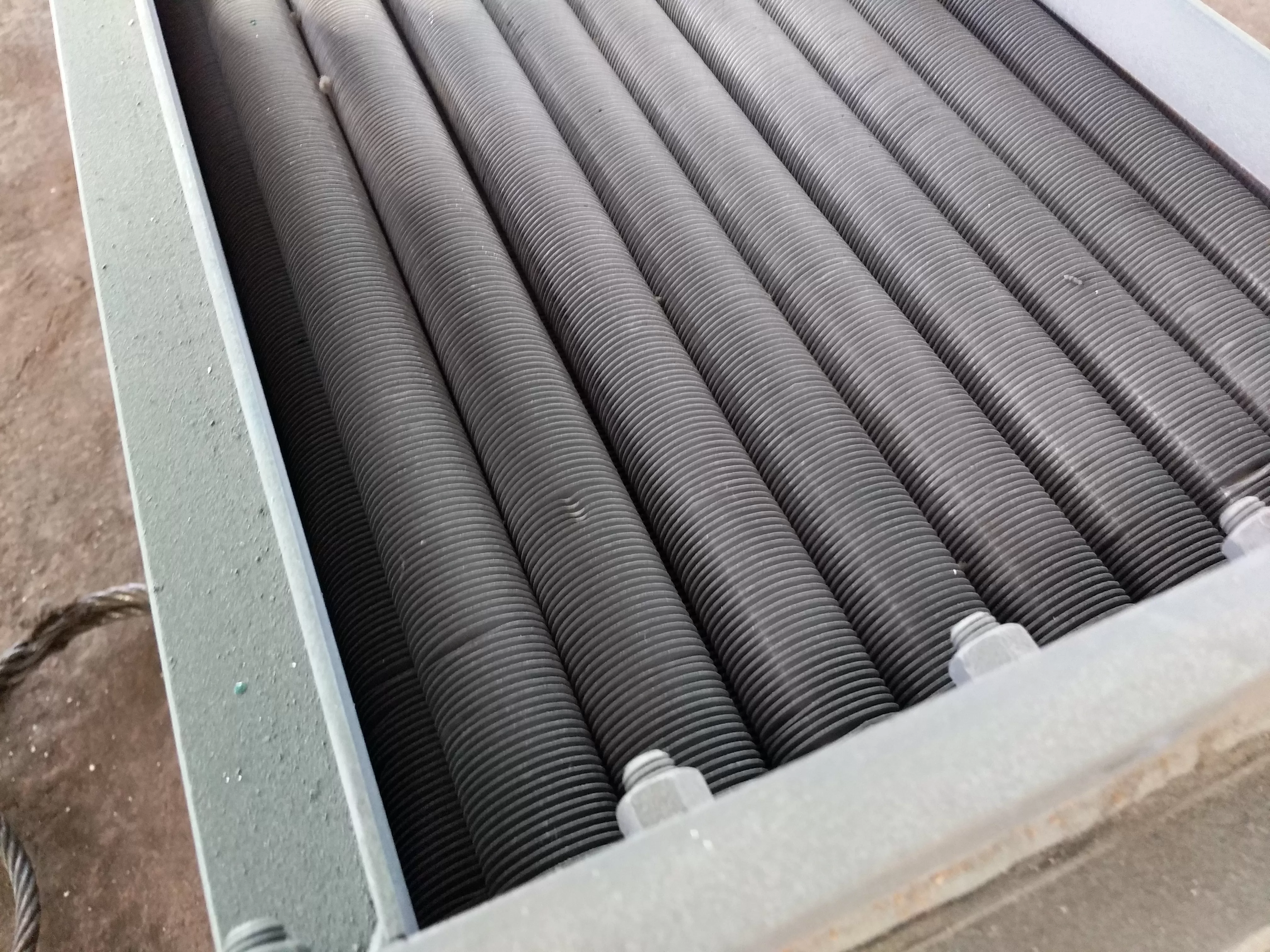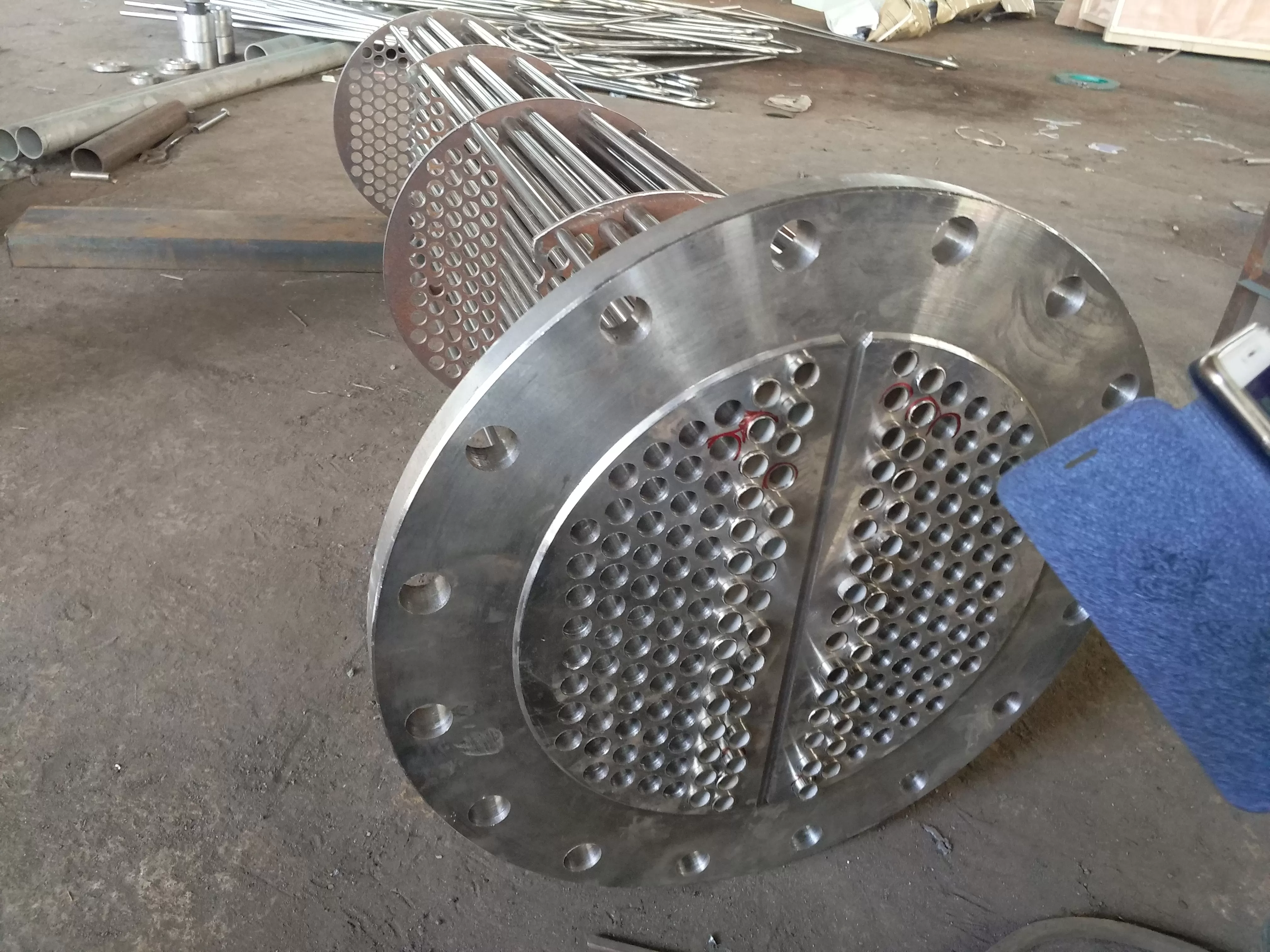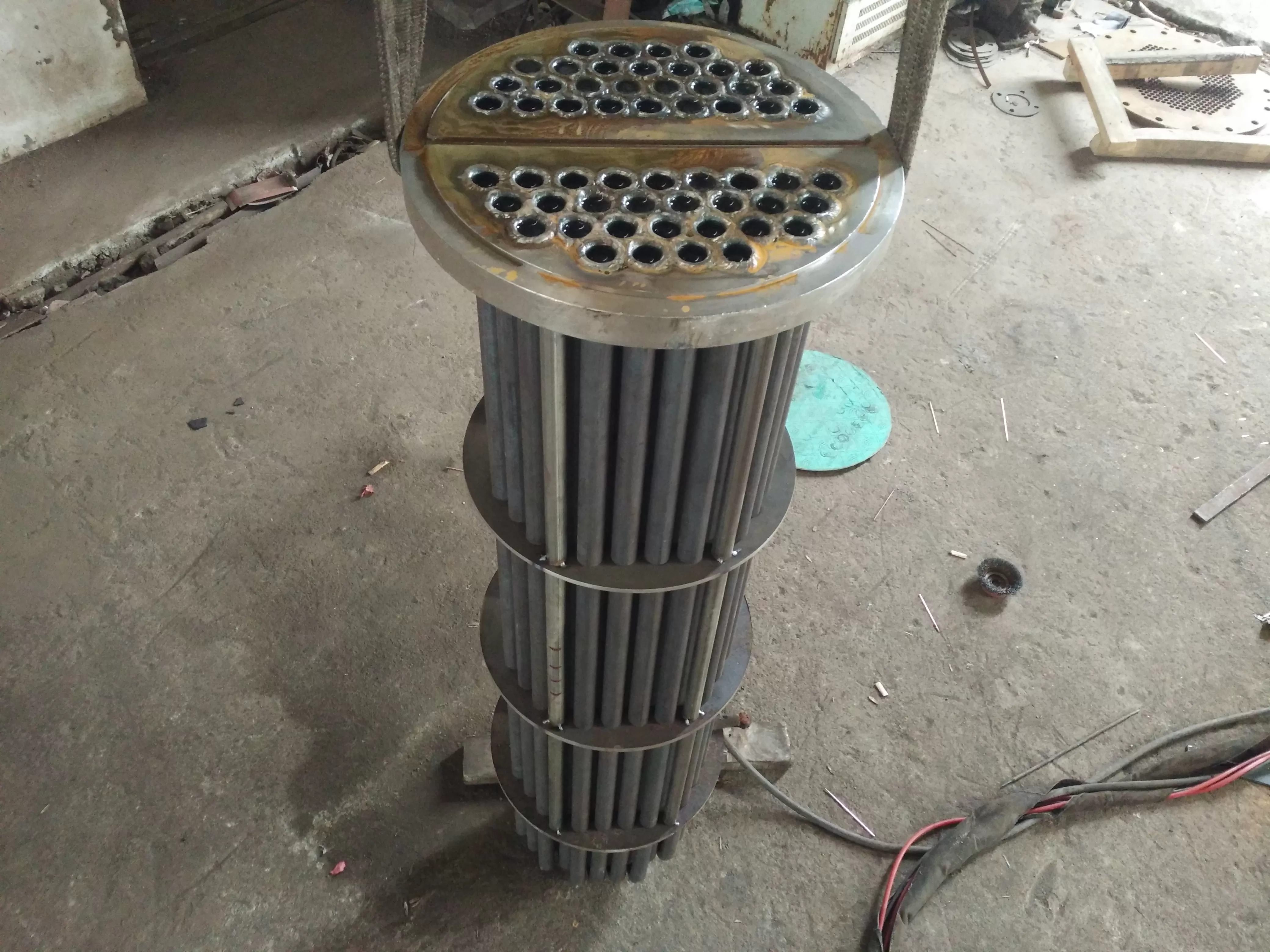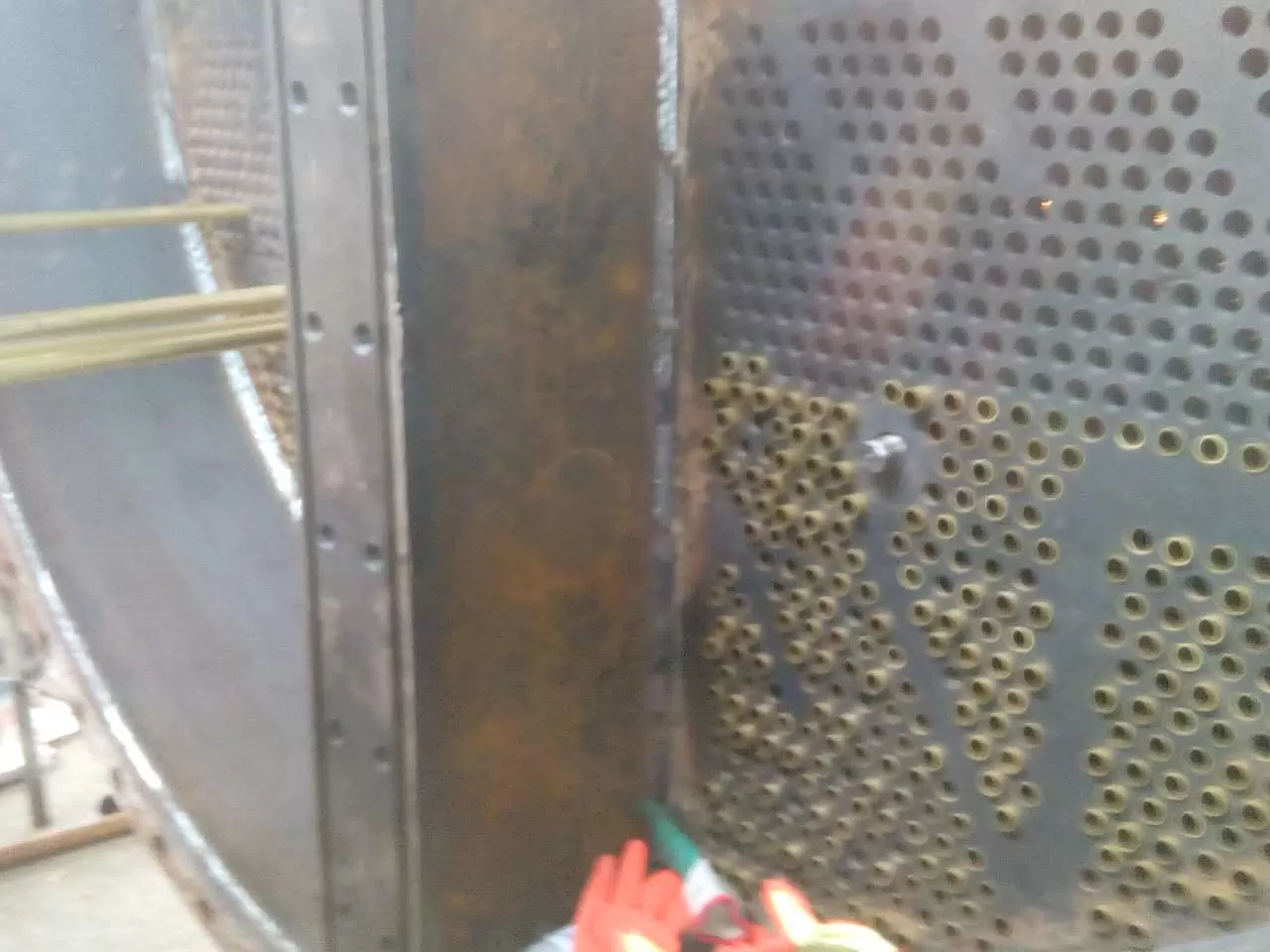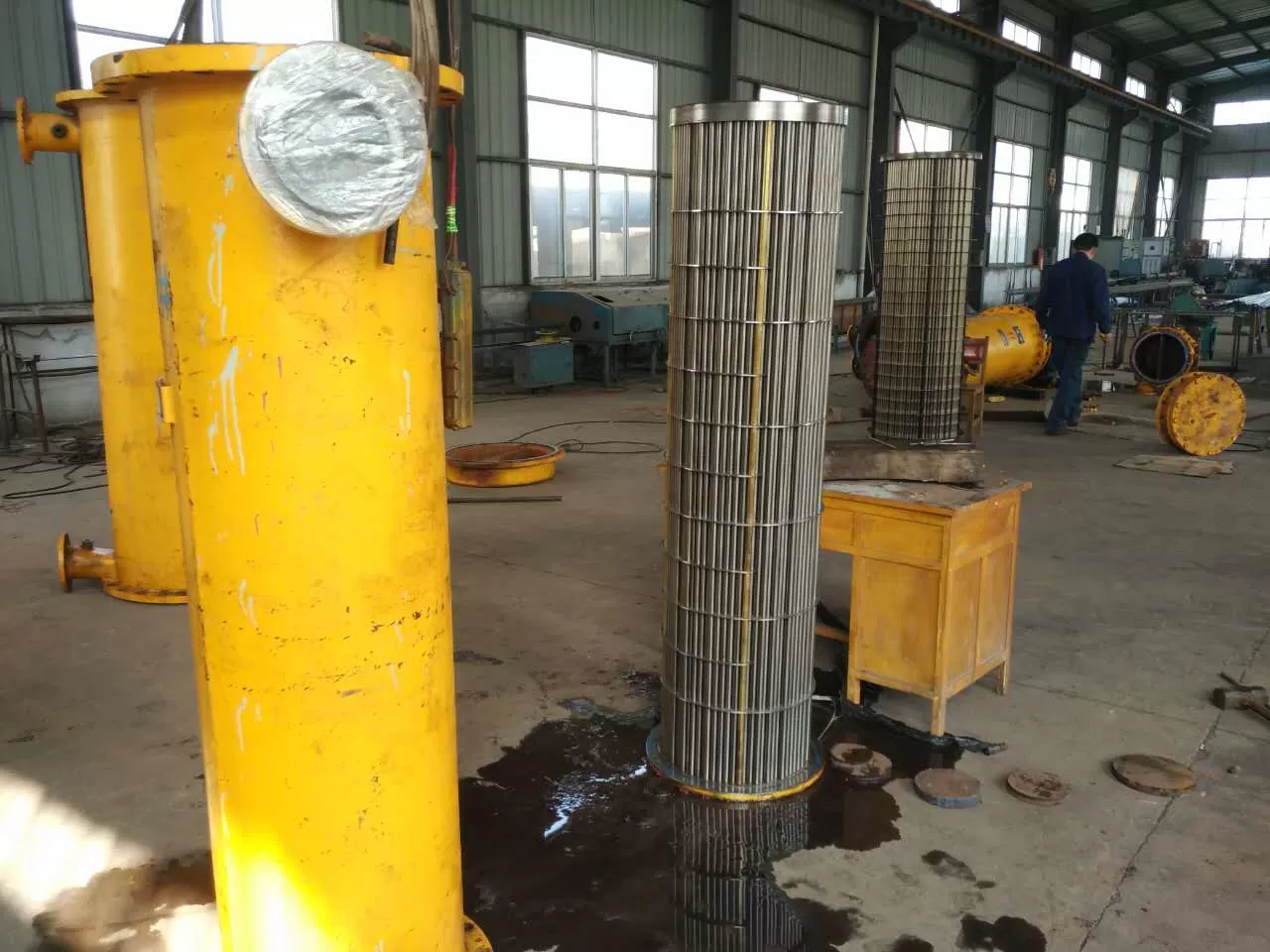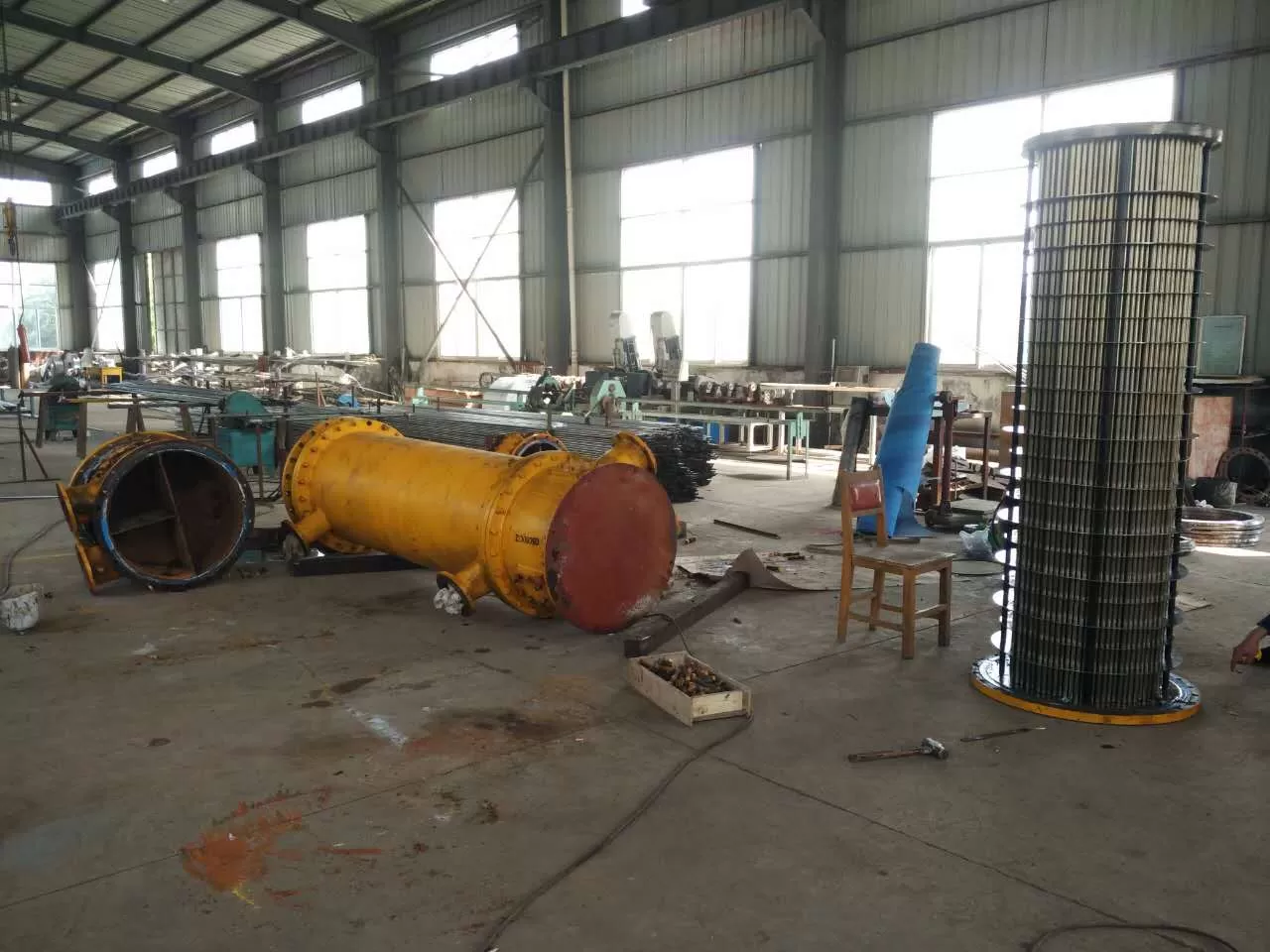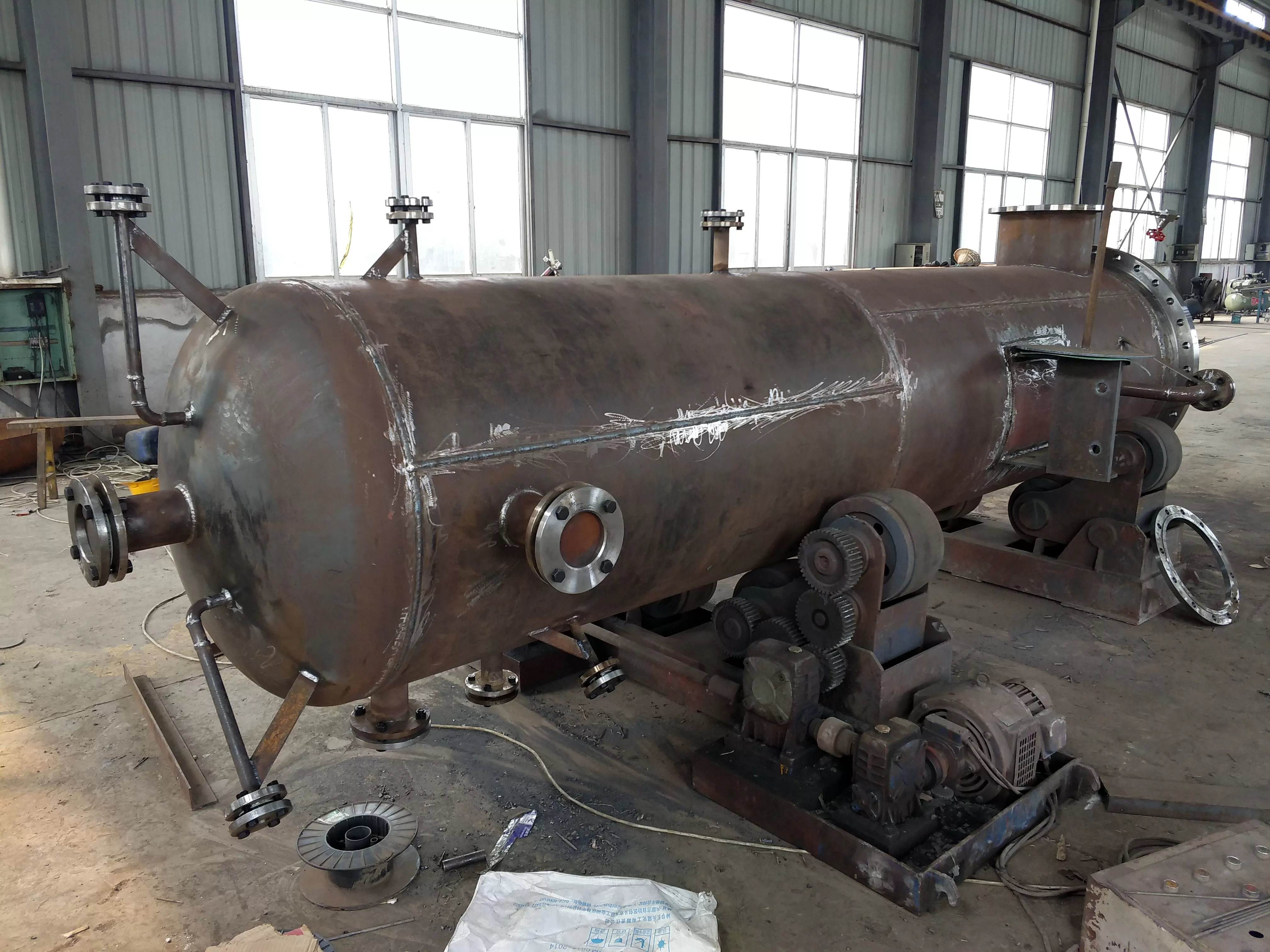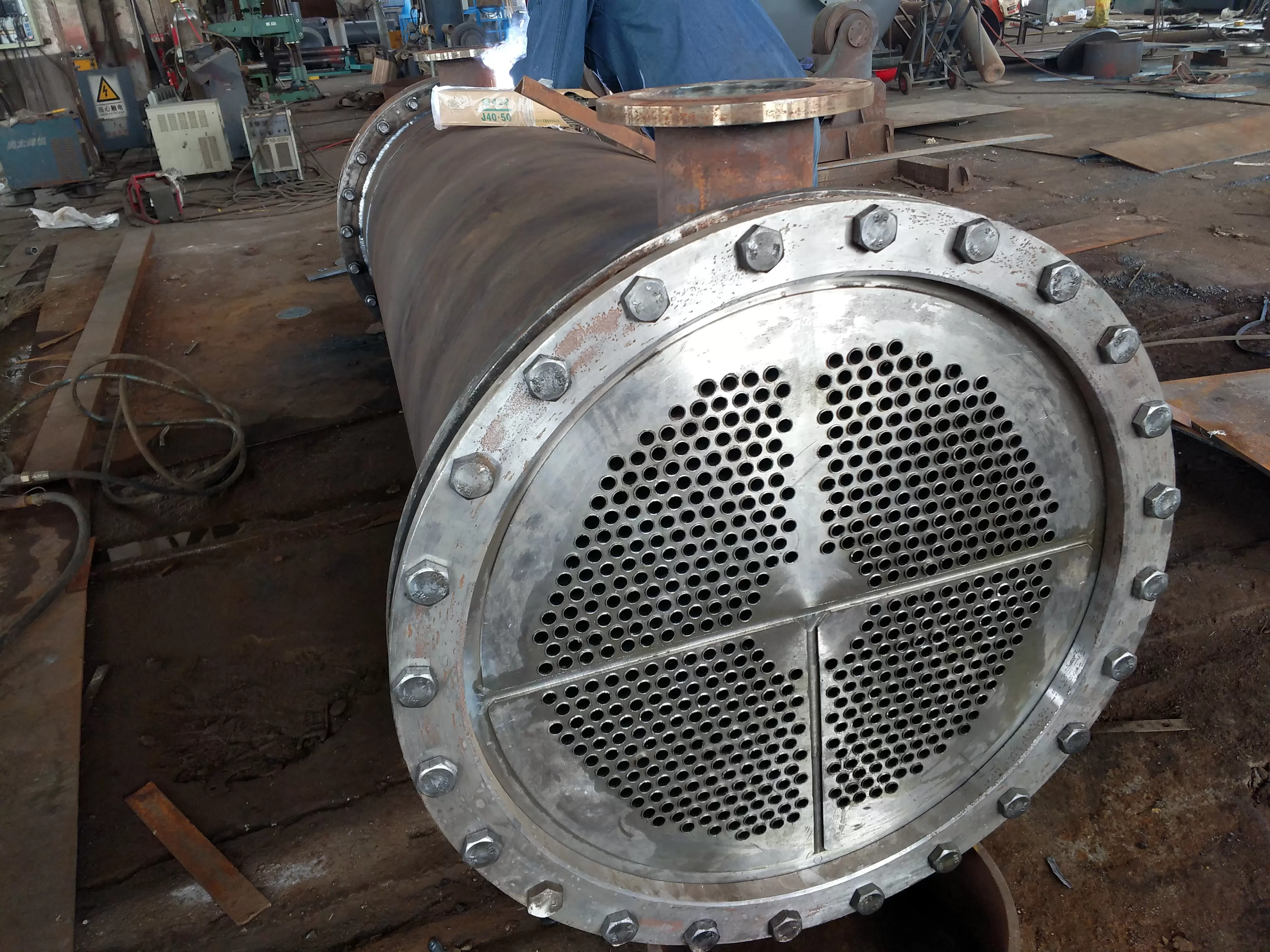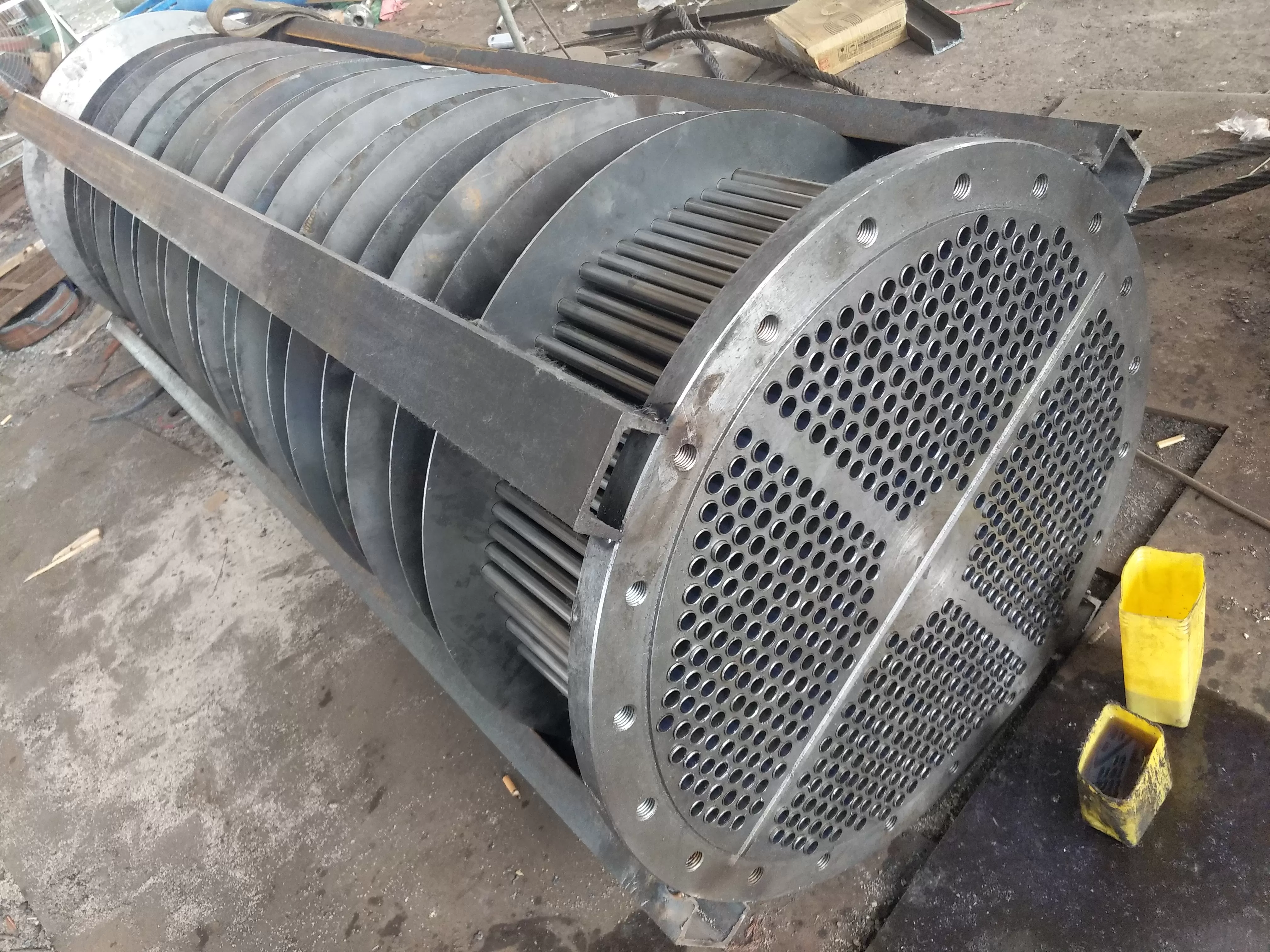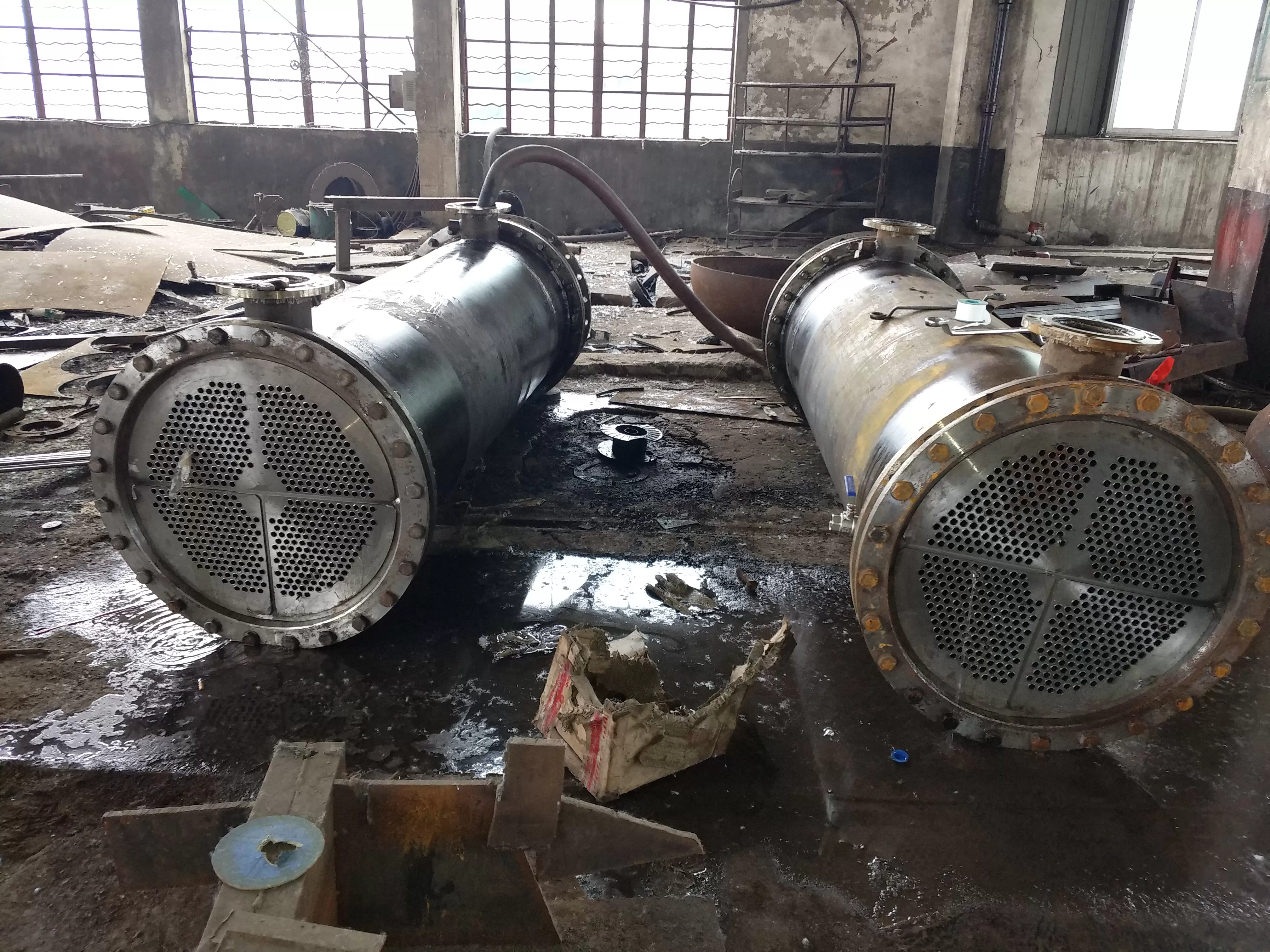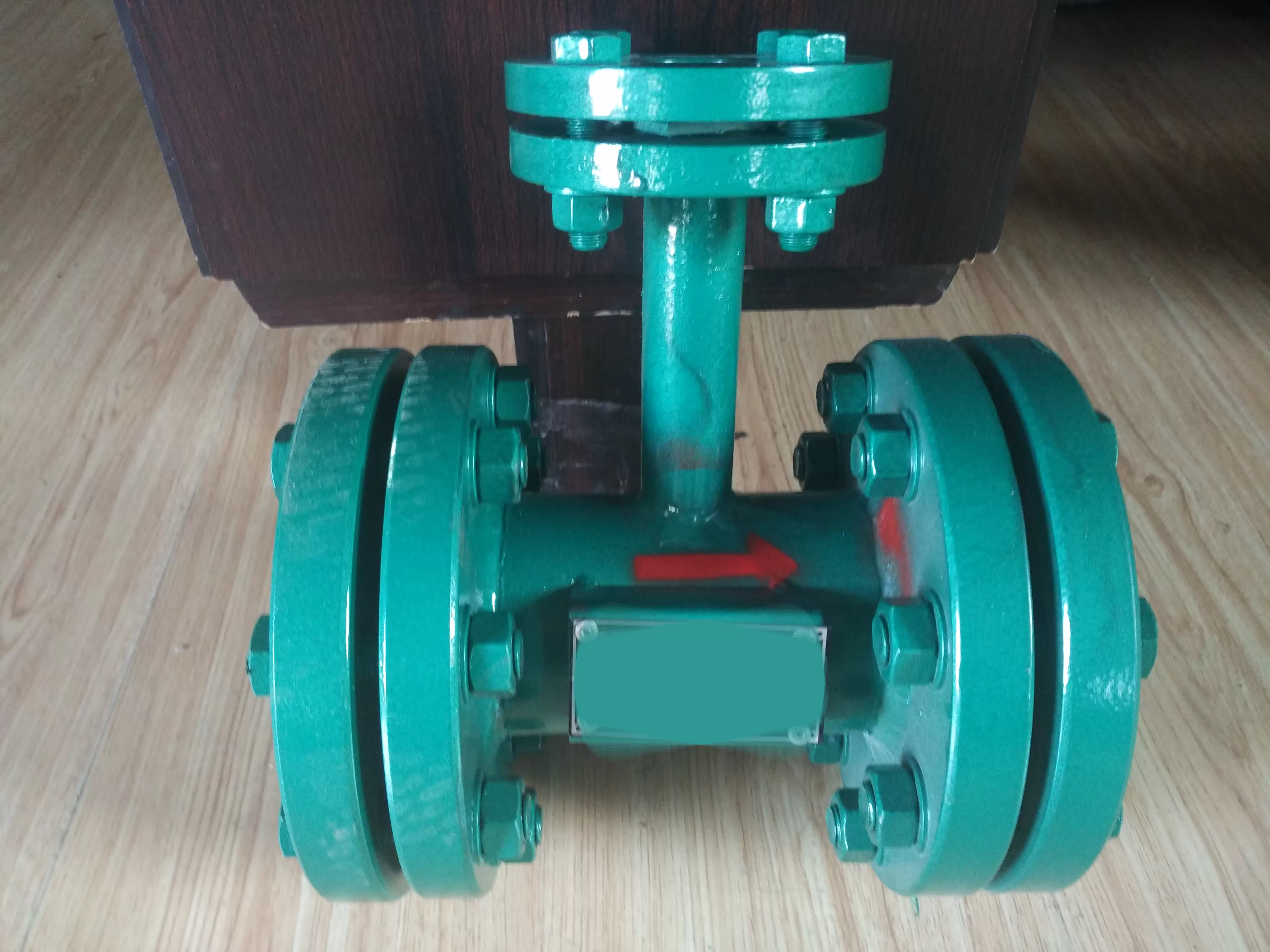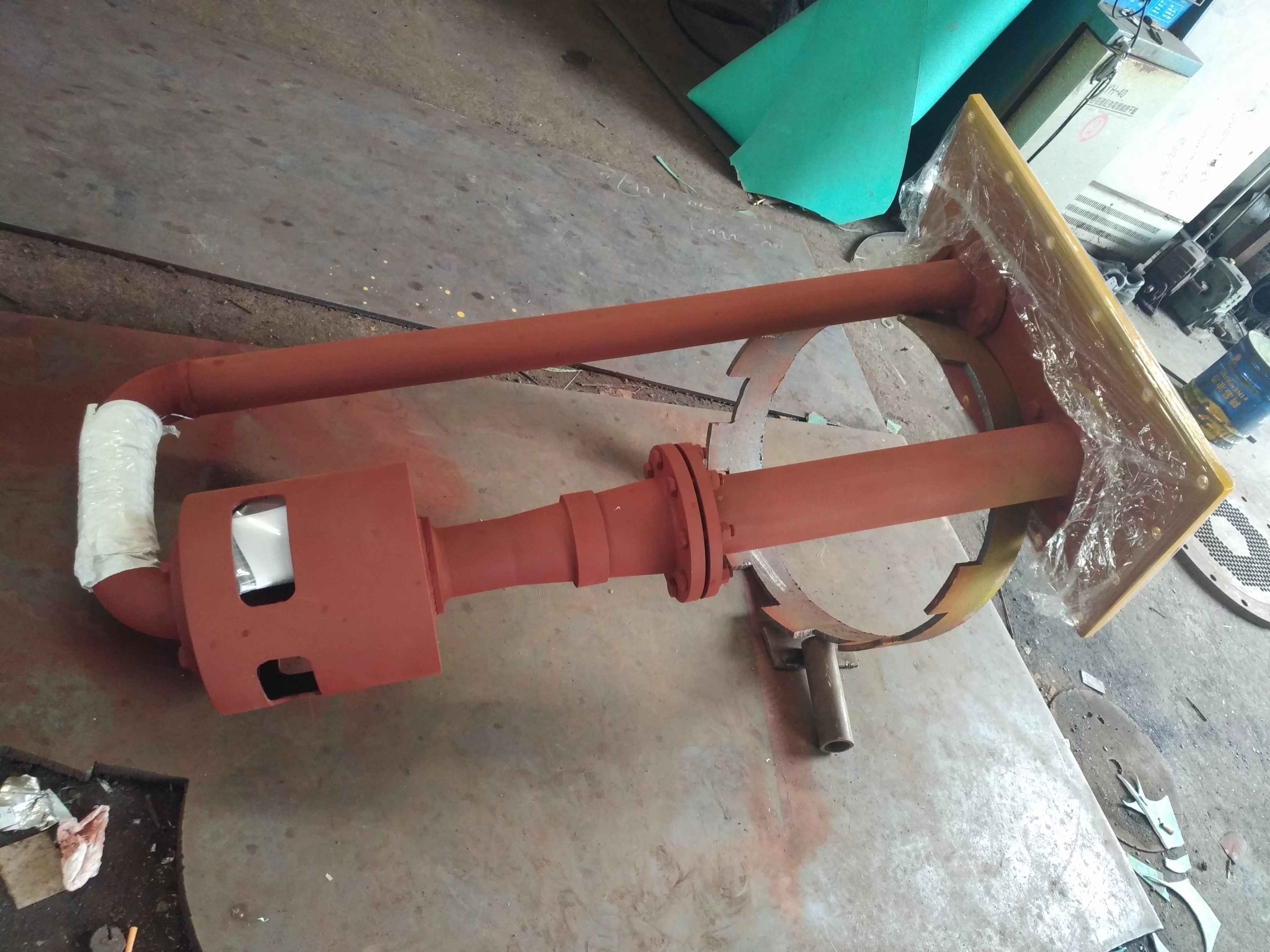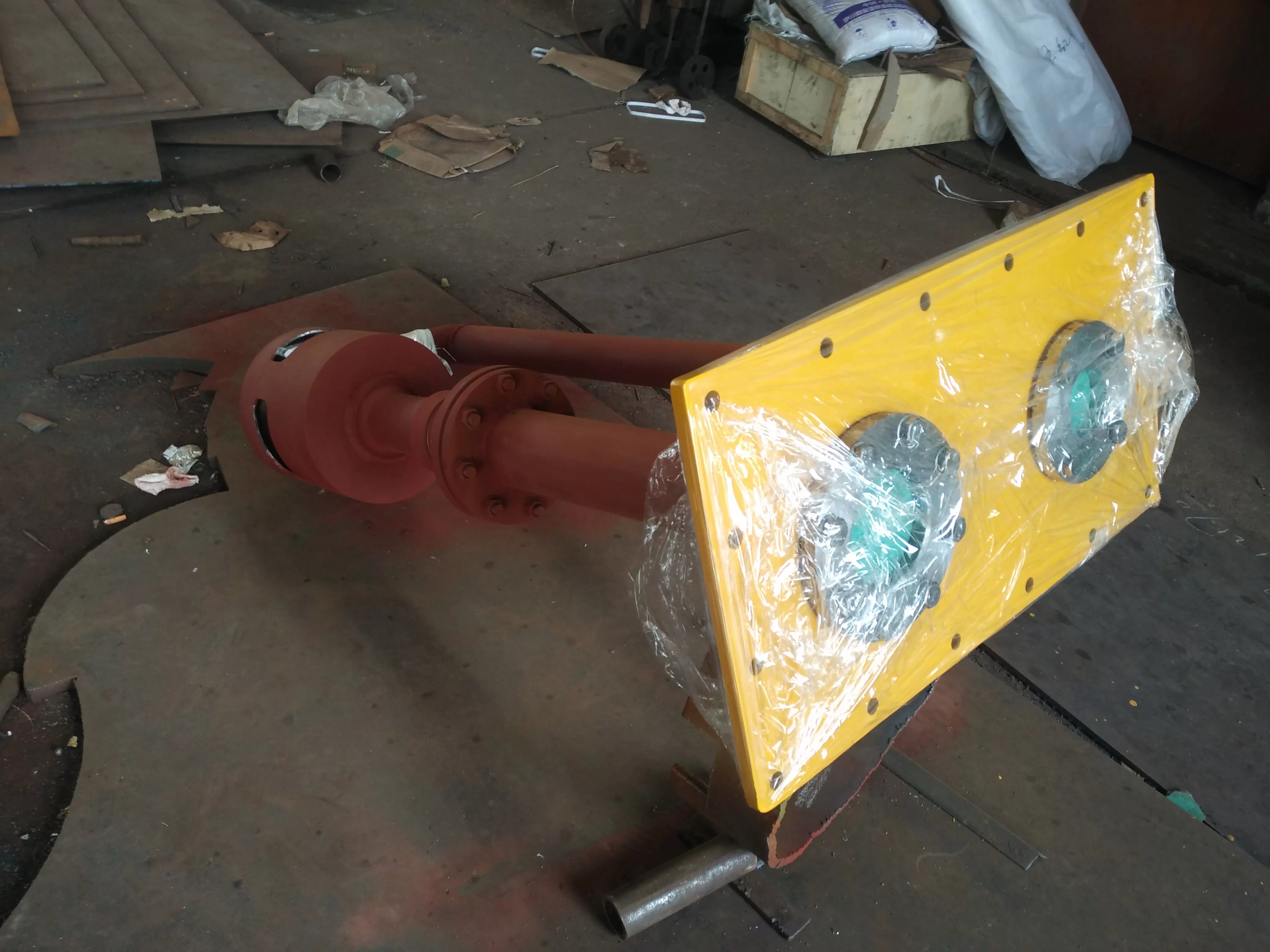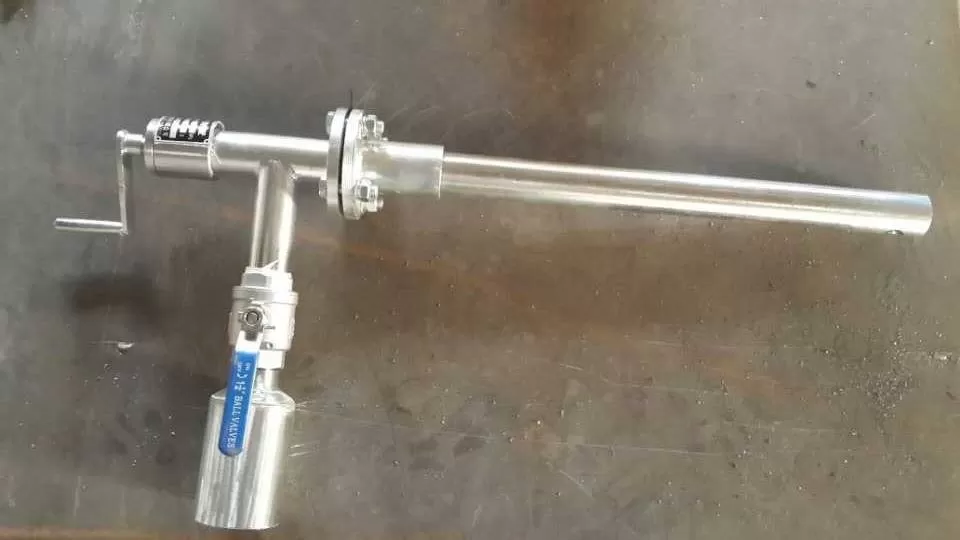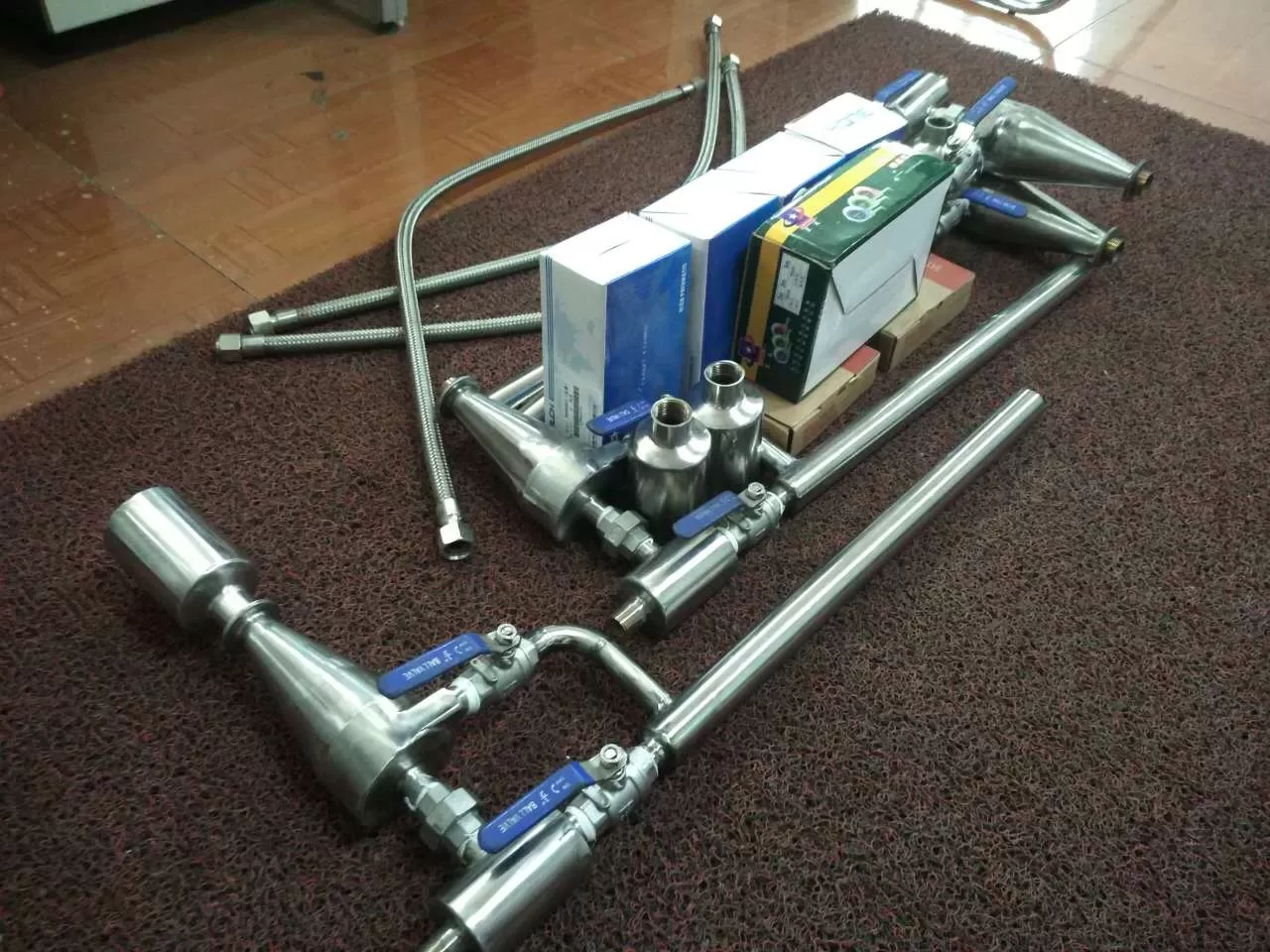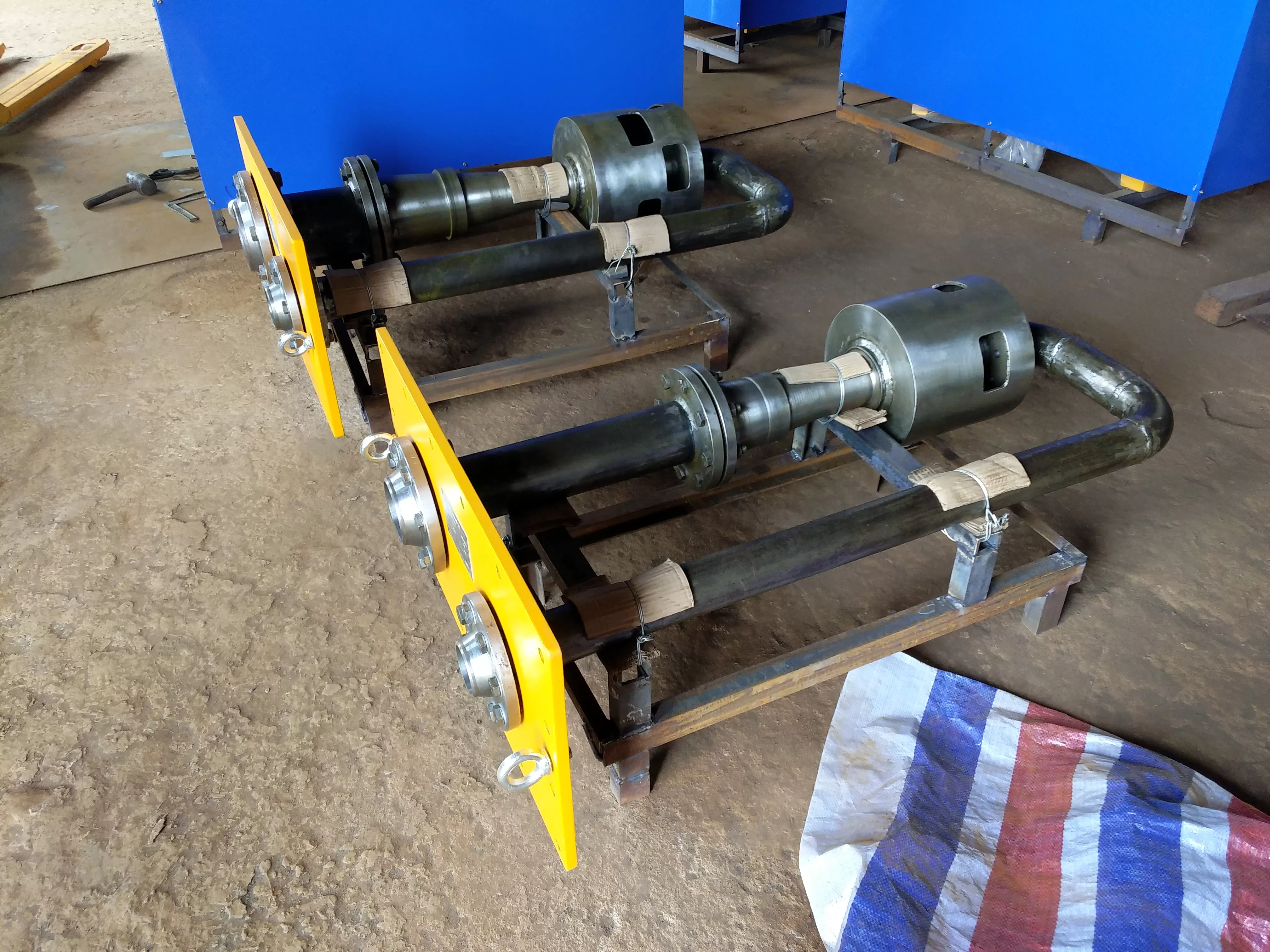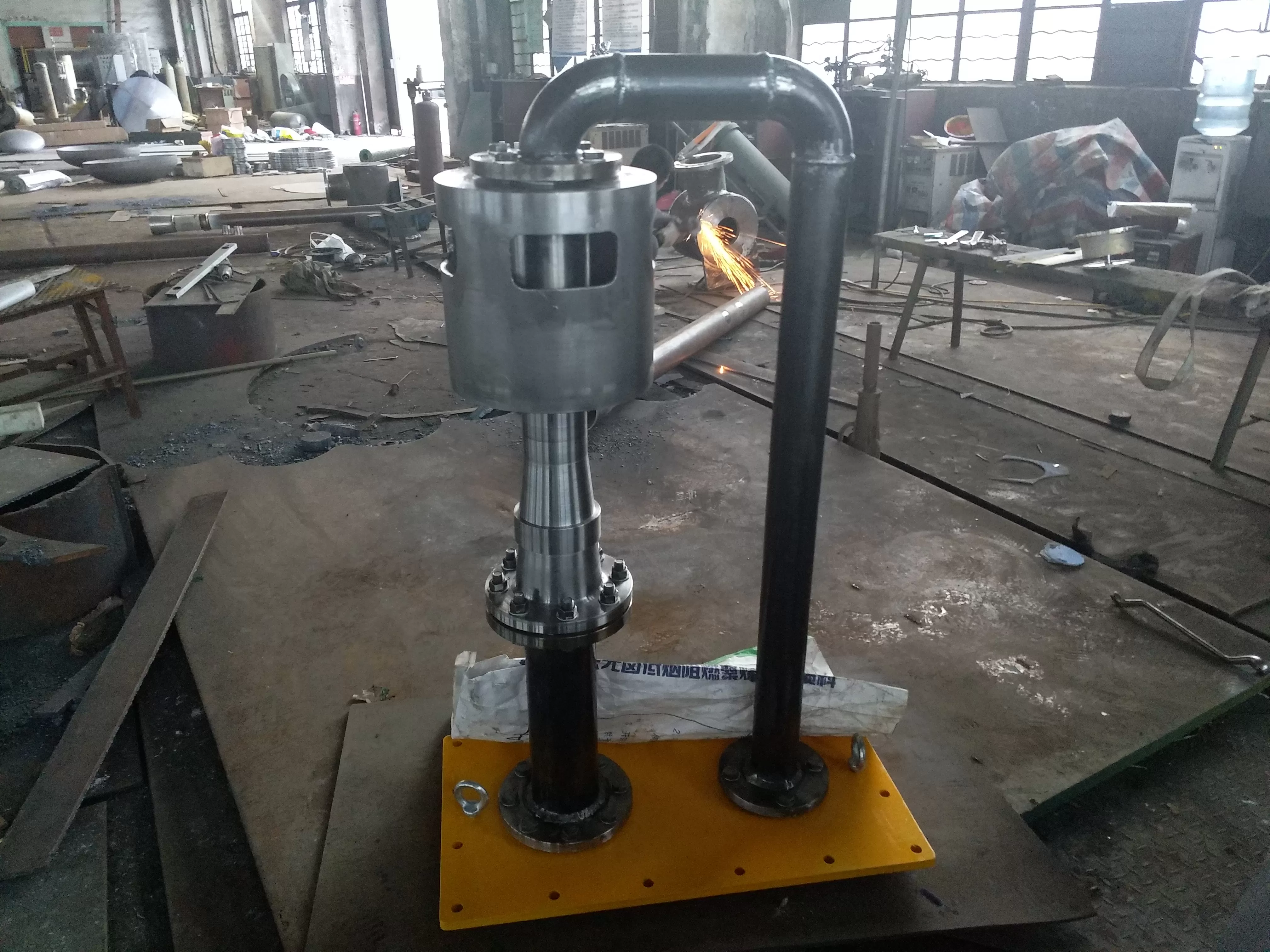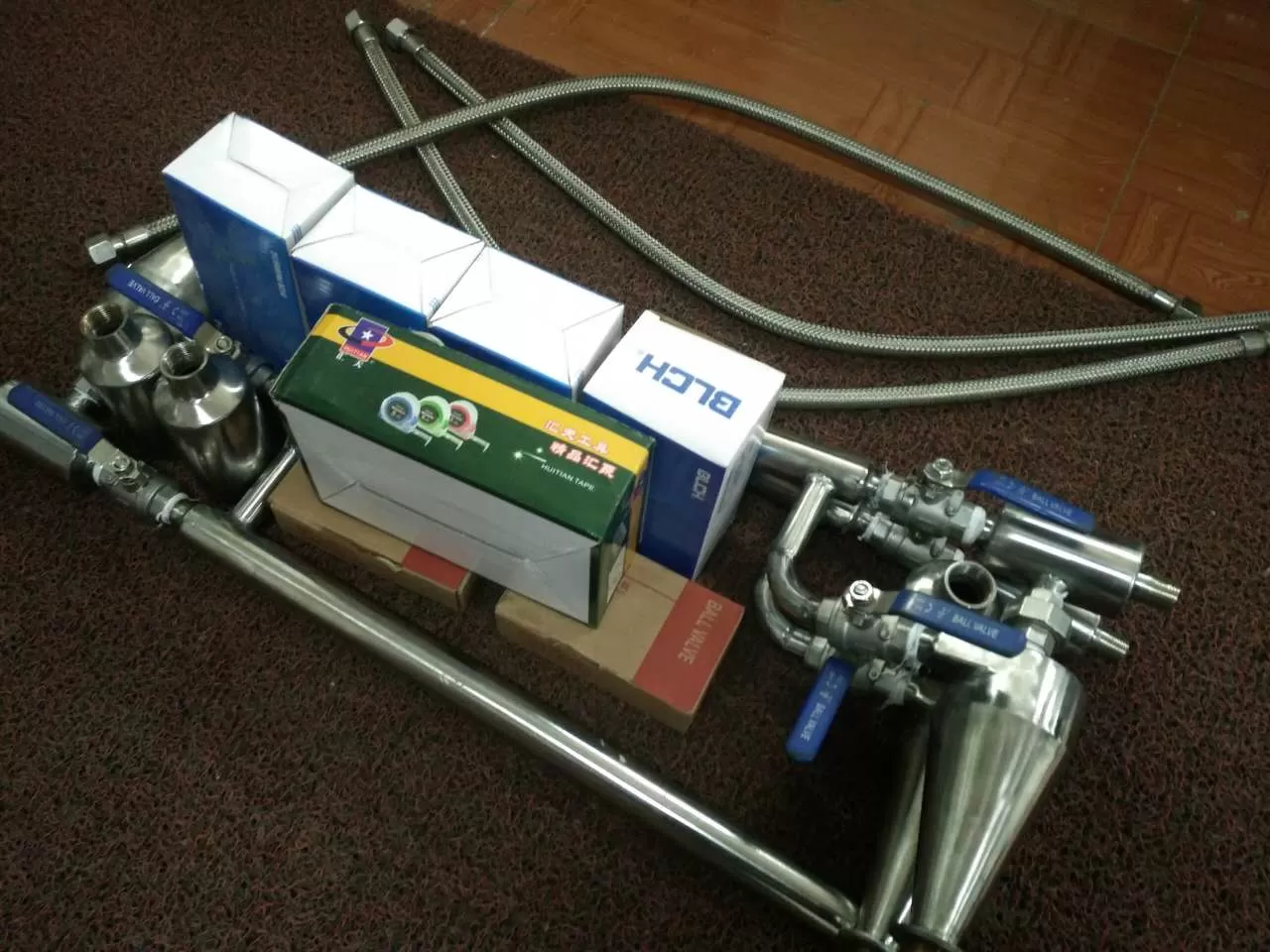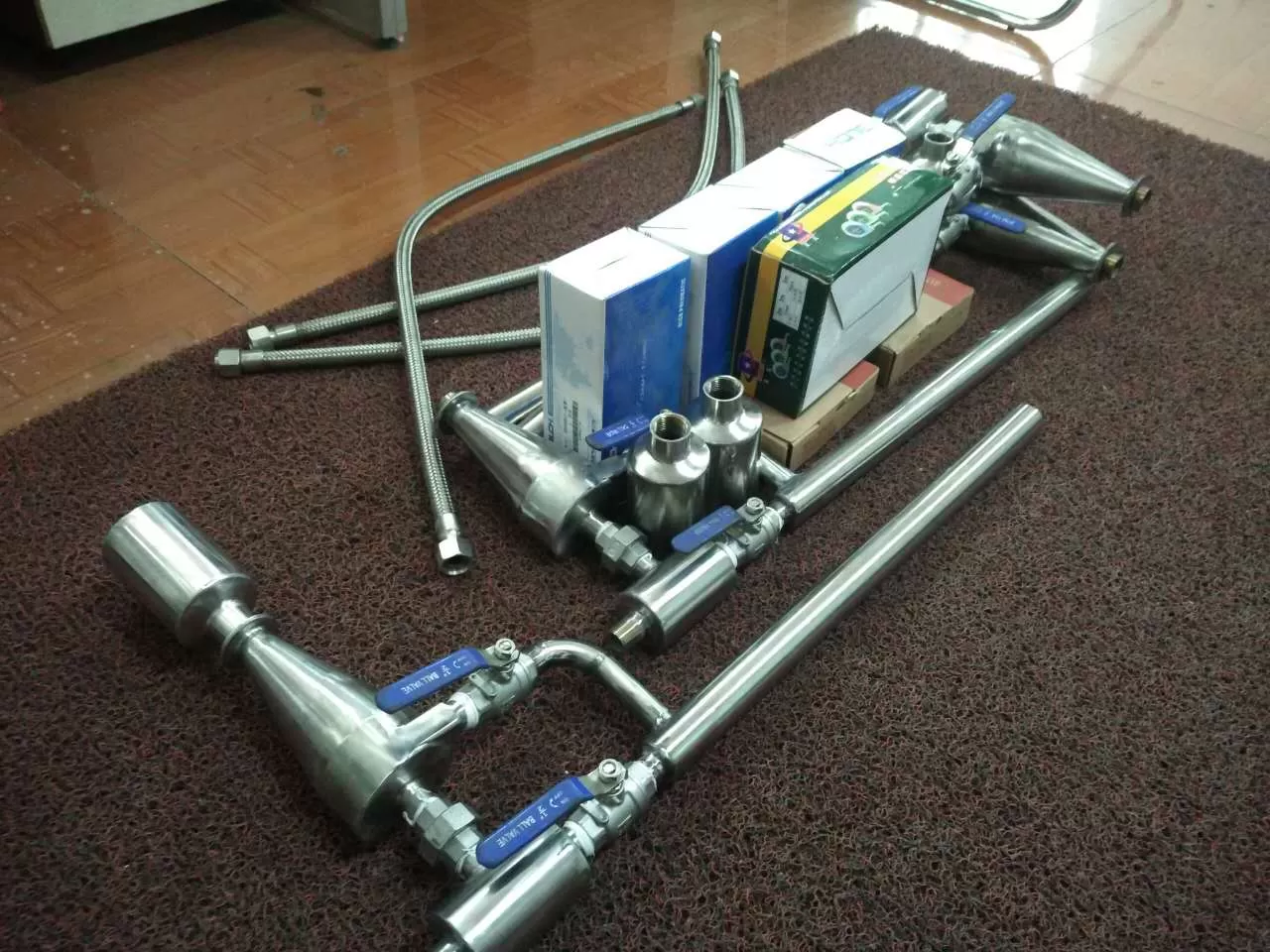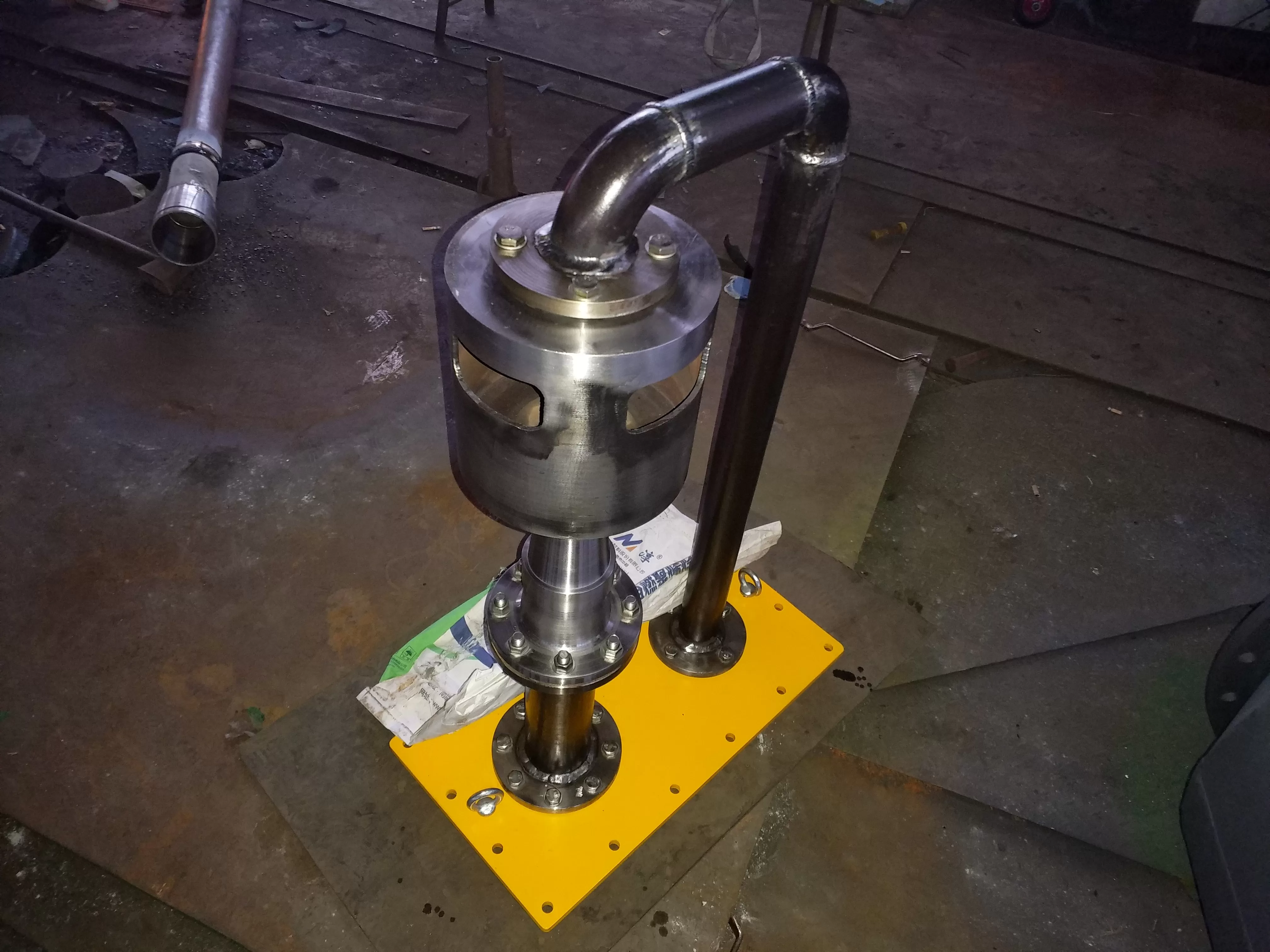The difference between high-pressure rotary membrane deaerator and low-pressure atmospheric rotary membrane deaerator:
The high working pressure of the high-pressure rotary film deaerator is 0.59MPa or 0.78MPa (for subcritical units), and the pressure of the low-pressure rotary film deaerator is greater than the ambient pressure (0.12MPa). The temperature of the low-pressure rotary film deaerator is heated to 104 degrees, and the oxygen content is not more than 15ug/L. The temperature of the high-pressure rotary film deaerator is around 160 degrees, and the oxygen content is 7ug/L.
Introduction to high-pressure rotary membrane deaerator:
High pressure rotary film deaerator, also known as pressure rotary film deaerator, is an alternative production of spray packing deaerator. It is a kind of thermal deaerator. The principle of rotary film deaerator is that the make-up water is spirally sprayed out through the film forming tube at a fixed angle to conduct heat exchange with the heating steam for deoxygenation. The feed water is heated to the saturation temperature under the working pressure of the corresponding deaerator to remove oxygen and other gases dissolved in the feed water, so as to prevent and reduce the boiler feed water pipe Corrosion of economizers and other ancillary equipment.
The foundation of deaerator:
Deaerator is one of the key equipment in boilers and heating systems. If the deaerator has poor deaeration capacity, it will cause severe losses to the corrosion of boiler feedwater pipelines, economizers, and other ancillary equipment, and the economic losses caused will be dozens or hundreds of times greater than that of deaerator construction. Therefore, the Ministry of Electric Power has proposed some standards for the oxygen content of deaerator, that is, the oxygen content of atmospheric deaerator feedwater should be less than 15% цɡ/ L. The oxygen content in the feedwater of the pressure deaerator should be less than 7 цɡ/ L.
The law of deoxygenation, the Galuc's law, states that when the pressure remains constant, for every 1 ° C increase in temperature of a fixed gas, the increase in volume is equal to 1/273 of its volume at 0 ° C; Or, when the pressure remains constant, the volume of a fixed gas is directly proportional to the thermodynamic temperature. It was discovered by the French scientist Gail ü sak in his experiments, hence the name. Suitable for natural gases, it is also approximately applicable to real gases at high and low temperatures.
Henry's law states that at a constant temperature, when the total gas pressure is not high, for a dilute solution, the concentration of the solute in the solution is proportional to its partial pressure in the gas phase; Dalton's law of partial pressure states that, at constant temperature and volume, the total pressure of a gas is equal to the sum of the partial pressures of its components, and the partial pressures of each component are equal to the pressure exhibited by the gas when it occupies a single total volume.
Structure of high-pressure rotary membrane deaerator:
The deoxygenation equipment mainly consists of two major components: the deoxygenation tower head, the deoxygenation water tank, and the connecting and external parts. The main component of the deoxygenation tower head is composed of a shell, a steam water separator, a type of rotary membrane separator (membrane tube), a water spray grate, and a heat storage packing liquid vapor network. Below, we will introduce the structure and principle of the deoxygenation tower head
1. Shell: It is made by welding the cylinder body and stamped elliptical head The small and low pressure deaerator is equipped with a flange connection between the upper and lower parts for assembly and maintenance purposes, while the high pressure deaerator is equipped with a manhole for maintenance purposes
2. Soda water separator: This device replaces the original design of the straw hat cone structure inside the deaerator, eliminating the phenomenon of steam carrying water in the deaerator.
3. Rotating membrane unit: composed of a water chamber, a steam chamber, a rotating membrane tube, a condensate pipe, a supplementary water pipe, and a secondary steam inlet pipe. The condensate, chemical supplementary water, are sprayed out in a spiral shape at a fixed angle through the rotating membrane unit to form a water film skirt, which exchanges heat with the heating steam introduced by the secondary heating steam pipe, forming a secondary deoxygenation, The feedwater is heated to a saturation temperature of 2-3 ℃ near the working pressure of the deaerator by contacting the rising secondary heating steam through a sprinkler grate, and then undergoes coarse deaeration- Generally, this rotary membrane can remove about 90-95% of the oxygen content in the feedwater
4. Water shower grate: It is made of several layers of staggered angle shaped steel, and the water supply through rotary membrane and coarse deoxygenation is distributed here for secondary distribution, falling evenly in a rain like manner onto the liquid vapor network installed below it
5. Heat storage packing liquid vapor network: It is composed of spaced flat steel strips and cylindrical bodies, with stainless steel wire mesh installed at a fixed height inside. The water supply is in full contact with the secondary steam here, heated to saturation temperature and subjected to degree deoxygenation. The low-pressure atmospheric deaerator is -10ug/L, and the high-pressure deaerator is -5ug/L (the ministerial standards are 15ug/L and 7ug/L respectively)
6. The deoxygenated water in the water tank is collected into the lower container of the deaerator, which is the water tank. The deaeration water tank is equipped with a scientifically designed strong heat exchange and reboiling device. This device has strong heat exchange, quickly increases water temperature, deoxygenates, reduces water tank vibration, and lowers mouth pressure, improving the use of equipment and ensuring the safe and reliable operation of equipment
Working principle of high-pressure rotary membrane deaerator:
Condensed water and supplementary water - enter the water chamber of the internal rotary membrane reactor in the deaeration head, and spray diagonally from the small hole of the membrane tube to the inner hole under a fixed water level differential pressure, forming a jet. As the inner hole is filled with rising heating steam, water will suck in a large amount of heating steam during the jet movement (experimental results show that the jet movement has a suction effect); A violent heating effect is generated on a short and small stroke, resulting in a significant increase in water temperature. The rotating water continues to spiral down along the inner wall of the membrane tube, forming a layer of turbulent water film skirt (the critical Reynolds number of water decreases during rotational flow, causing turbulent rolling). At this time, the heat and mass transfer of water in the turbulent state is achieved, and the water temperature reaches saturation temperature. Oxygen is separated out, and due to the arbitrary diffusion of oxygen in the inner hole, only rising steam is discharged into the atmosphere from the exhaust pipe (although the deaerator heats water and separates oxygen, the oxygen ratio is greater than that of the heating steam, and some oxygen is carried into the water tank by downstream water, which is also one of the reasons for poor deaeration results). The water supply that undergoes membrane and coarse deoxygenation, as well as the drainage introduced by the drainage pipe, are combined here for secondary distribution, falling evenly in a rain like manner onto the liquid vapor network installed below it, and then undergoing partial deoxygenation before flowing into the water tank. The oxygen content in the water tank is high pressure 0-7 цɡ/ L. Low pressure less than 15 цɡ/ L meets the operational standards issued by the department.
Due to the fact that the rotary membrane deaerator keeps the water in a turbulent state during operation and has a sufficiently large heat exchange surface area, the more heat and mass transfer results, the smaller the exhaust steam volume (i.e., the less steam used for heating, and the less energy loss, the more economic benefits it brings). The excess produced by the deaerator can enable it to operate under load (usually up to 50% of the rated output in the short term) or achieve operating standards under low water temperature full replenishment.
High pressure rotary membrane deaerator -:
Not only can it remove dissolved oxygen from boiler feedwater, but it can also remove corrosive gases such as free CO2, NH3, H2S, etc. from water.
Deoxygenated water - will not increase salt content and other impurities.
Using high packing material, high deoxygenation rate, and warm water supply.
Under normal room temperature conditions, the oxygen content of the effluent can still meet the specified requirements.
The classified deoxygenation equipment mainly consists of two major components: the deoxygenation tower head, the deoxygenation water tank, and the connecting and external parts. The main component of the deoxygenation device (deoxygenation tower head) is composed of a shell, a steam water separator, a type of rotary membrane separator (membrane tube), a water spray grate, a heat storage packing liquid vapor network, and other components
The interface ring between the deaerator and the water tank is welded at the installation site to form the deaerator equipment. The accessories of the deaerator equipment include:
1. Safety valve: installed on the water tank, when the internal pressure of the equipment exceeds the allowable value, the safety valve automatically opens to release pressure, playing a safety protection role.
2. Pressure gauge: installed on the top of the deaerator to monitor the pressure inside the equipment.
3. Thermometer: installed at the bottom of the water tank to monitor the temperature of the water inside the tank.
4. Butterfly valve: installed on the heating steam pipeline, with the help of an electric regulator, the heating gas flow rate is adjusted to maintain the pressure inside the deaerator within the rated range.
5. Stop valve: installed on the secondary heating steam pipeline to regulate the flow rate of the secondary heating steam.
6. Regulating valve: installed on the chemical water supply pipe, with the help of an electric water temperature control system, to regulate the flow rate of makeup water and maintain the positive water level of the water tank.
7. Water level gauge: installed on the water tank to monitor the water level inside the tank.
8. Electric gate valve: installed on the drainage pipeline of the water tank. When the water level in the water tank exceeds a certain limit, the electric gate valve will automatically open with the help of the electric water level regulation system, and the water that exceeds the limit will be discharged to the drainage tank.
9. Automatic pressure regulator: Automatically adjusts the opening of the heating steam flange, which not only regulates the steam flow rate but also maintains stable pressure inside the deaerator.
10. Electric water level regulation system - Automatic adjustment of supply water flow and control - Limiting water level discharge valve (electric gate valve).
11. Monitor the temperature of the main condensate inside the deaerator, including chemical makeup, drainage, heating steam - and feedwater, as well as the outlet temperature of the exhaust steam.
12. Monitoring heating steam: pressure gauges for main condensate, chemical step water, and drain pressure.
The above attachments and accessories can be purchased by our factory, but they are not within the scope of supply.
Choose a high-pressure rotary membrane deaerator to provide the following data:
Rated output of deaerator: t/h, water replenishment capacity of deaerator: t/h
Working pressure of deaerator: MPa, make-up water temperature entering deaerator: ℃
Operating temperature of the deaerator: ℃, entering the deaerator high pressure heater drainage water volume: t/h
Main steam pressure: MPa, entering deaerator high pressure heater drain temperature: ℃
Main steam temperature
Specification, model, and technical parameters of high-pressure deaerator:
Technical parameters of rotary membrane deaerator:
Pressure type rotary membrane deaerator (also known as high-pressure rotary membrane deaerator, high-level rotary membrane deaerator) GCM type operating pressure 0.1-0.98 MPa:
型号 | 额定出力 T/H | 水箱有- 容积(m) | 工作温度 (℃) | 工作压力 Mpa | 进水温度 (℃) | 设计温度 (℃) | 设备-量 (Kg) |
GCM-220 | 220 | 50 | 158 | 0.5 | 20 | 250 | 22866 |
GCM-250 | 250 | 60 | 158 | 0.5 | 20 | 250 | 25260 |
GCM-300 | 300 | 70 | 158 | 0.5 | 20 | 250 | 29292 |
GCM-350 | 350 | 70 | 158 | 0.5 | 20 | 250 | 30756 |
GCM-440 | 440 | 100 | 158 | 0.5 | 20 | 250 | 48166 |
GCM-600 | 600 | 140 | 158 | 0.5 | 20 | 250 | 62560 |
GCM-680 | 680 | 140 | 158 | 0.5 | 20 | 250 | 63895 |
GCM-710 | 710 | 140 | 158 | 0.5 | 20 | 250 | 65062 |
GCM-1080 | 1080 | 200 | 158 | 0.5 | 20 | 250 | 92220 |
|
|
|
|
|
|
|
|
|
|
|
|
|
|
|
|
大气式低压旋膜除氧器(又称低压旋膜除氧器,低位旋膜除氧器)DCM型运行压力0.02~0.08MPa:
型号 | 额定出力 T/H | 水箱有- 容积(m) | 工作温度 (℃) | 工作压力 Mpa | 进水温度 (℃) | 设计温度 (℃) | 设备-量 (Kg) |
DCM-10 | 10 | 5 | 104 | 0.02 | 20 | 250 | 3680 |
DCM-20 | 20 | 10 | 104 | 0.02 | 20 | 250 | 4570 |
DCM-35 | 35 | 15 | 104 | 0.02 | 20 | 250 | 5355 |
DCM-40 | 40 | 20 | 104 | 0.02 | 20 | 250 | 6150 |
DCM-50 | 50 | 22 | 104 | 0.02 | 20 | 250 | 8250 |
DCM-75 | 75 | 25 | 104 | 0.02 | 20 | 250 | 9445 |
DCM-85 | 85 | 35 | 104 | 0.02 | 20 | 250 | 12200 |
DCM-100 | 100 | 40 | 104 | 0.02 | 20 | 250 | 14805 |
DCM-130 | 130 | 45 | 104 | 0.02 | 20 | 250 | 16250 |
DCM-150 | 150 | 50 | 104 | 0.02 | 20 | 250 | 17500 |
DCM-300 | 300 | 75 | 104 | 0.02 | 20 | 250 | 23885 |
